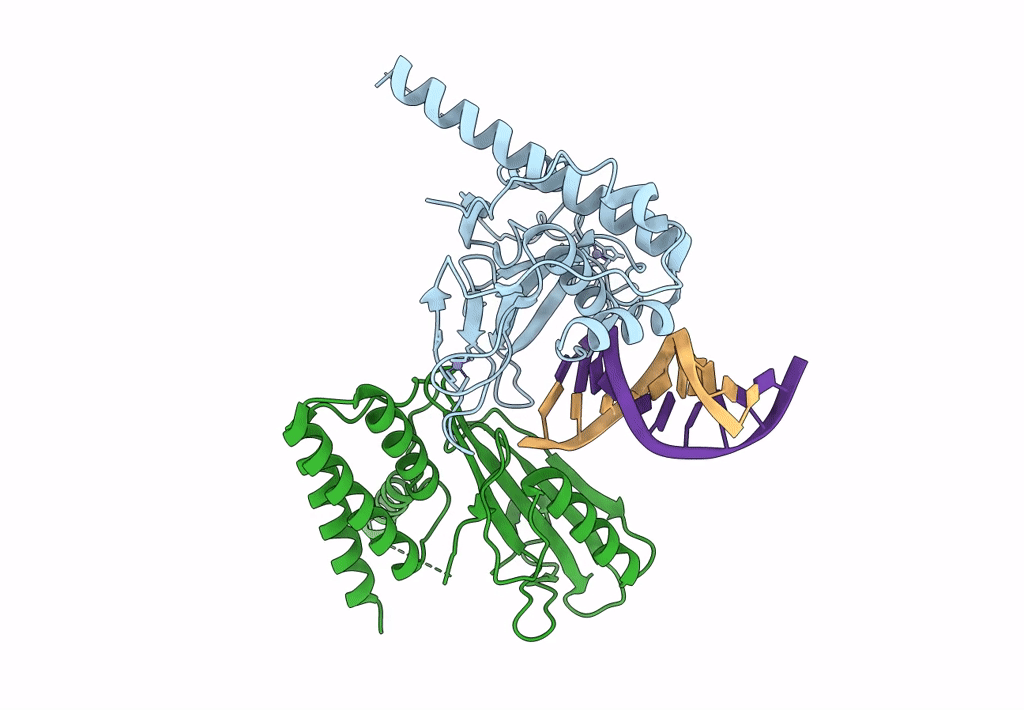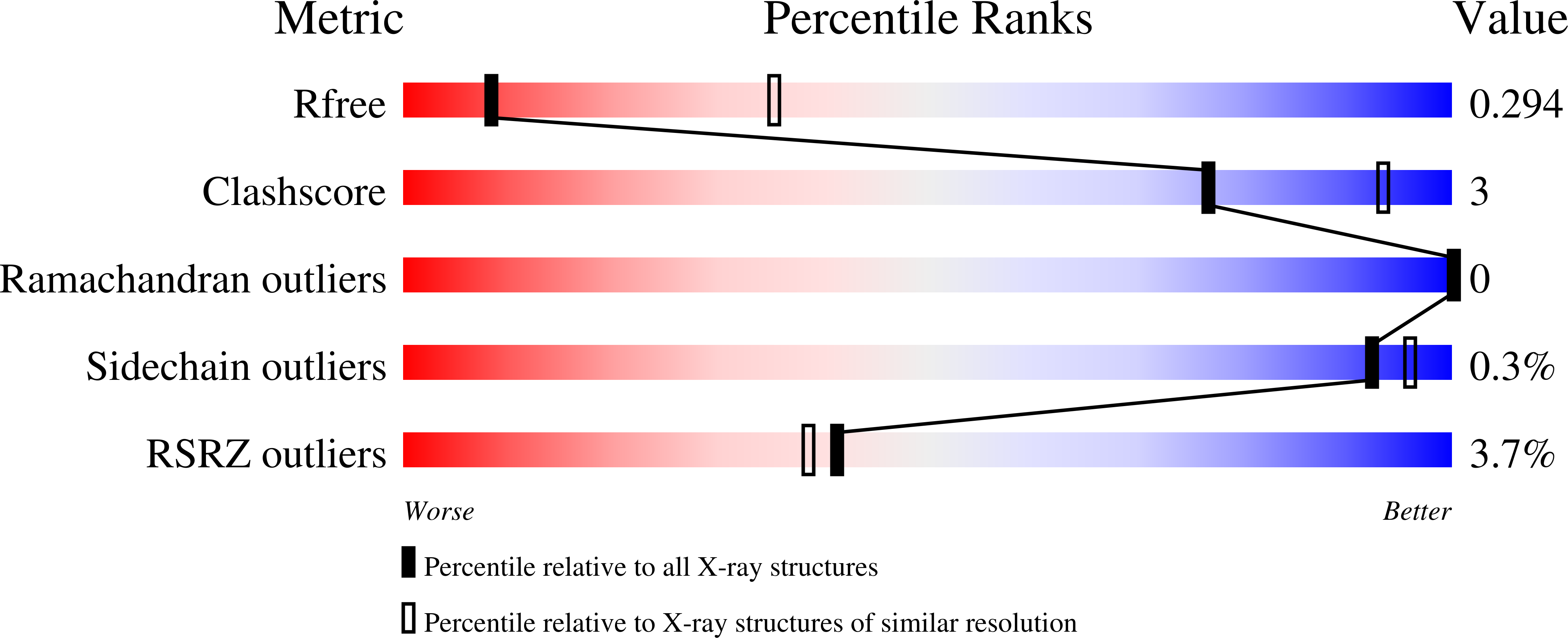
Deposition Date
2021-09-13
Release Date
2022-06-29
Last Version Date
2023-10-18
Entry Detail
PDB ID:
7S68
Keywords:
Title:
Structure of human PARP1 domains (Zn1, Zn3, WGR and HD) bound to a DNA double strand break.
Biological Source:
Source Organism:
Homo sapiens (Taxon ID: 9606)
DNA molecule (Taxon ID: 2853804)
DNA molecule (Taxon ID: 2853804)
Host Organism:
Method Details:
Experimental Method:
Resolution:
3.30 Å
R-Value Free:
0.29
R-Value Work:
0.25
R-Value Observed:
0.25
Space Group:
C 1 2 1


